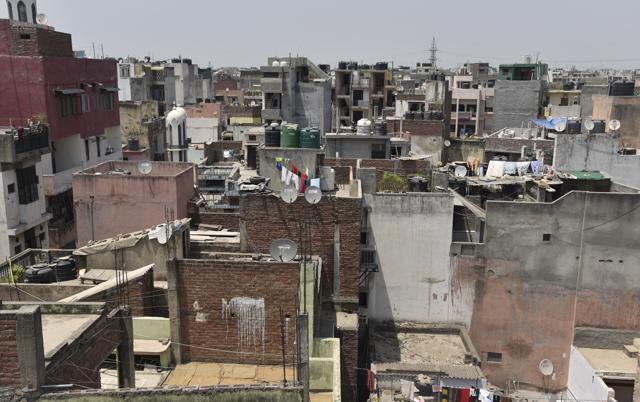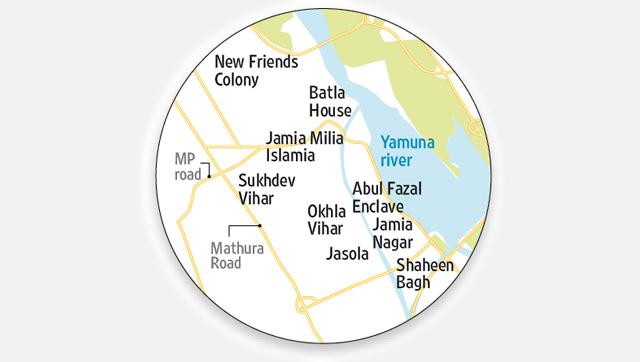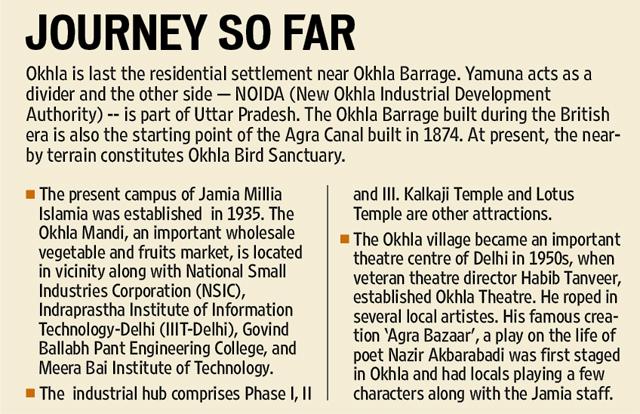Unplanned Okhla in dire need of a growth idea
The idea to develop Okhla as an education hub was lost when parts of it saw industrial, commercial and residential expansion and the government failed to work out a growth plan for the area
Situated on the banks of Yamuna river, the residential colonies of Okhla are a pitiable sight. Heaps of garbage and rows of slum clusters have not only choked the river, but the area stinks of sewage and waste. Okhla, once a village, showed first signs of urbanisation in 1935 when the foundation for a new building for Jamia Millia Islamia, earlier housed in Karol Bagh, was laid.

Over the years, the area grew rapidly with parts of it developing into industrial, commercial, educational and residential hubs. Today, it comprises residential colonies such as Zakir Nagar, Batla House, Abul Fazal Enclave, Okhla Head, Jamia Nagar, Shaheen Bagh, Okhla Vihar, Johri Farm, Ghaffar Manzil, and Jamia Millia Islamia campus spread over 200 acre.
During the early 70s, when most of Delhi was being urbanised, people from various parts of the country started moving to Jamia Nagar. The initial move was led by the professors of the university along with their families and later many other families followed.
Despite this large-scale expansion, the successive governments have failed to work out a comprehensive plan for this area. Residents rue that the population near Yamuna bank is taken into consideration only at the time of elections and their problems are forgotten soon after. The flow of residents into this area had started with the objective of education which was lost over the years. The unchecked urban migration later resulted in the formation of unauthorised colonies here.

CULTURAL CENTRE
Okhla might be congested and cramped, but it is home to a unique mingling of cultures. With Jamia as the nerve centre, areas like Batla House and Zakir Nagar accommodate university students from across the nation as well as countries like Afghanistan, Uzbekistan and Turkey. The entire cluster of these areas faces critical developmental issues, but the liveliness of the streets is unmatched. The narrow lanes of Batla House with all-night shops add fun to life, while packed streets of Zakir Nagar are famous for its food especially biryani and kebabs.
Veteran theatre director Habib Tanveer established Okhla Theatre in the 50s. He roped in several local artistes for his various productions. His famous creation ‘Agra Bazaar’, a play on the life of poet Nazir Akbarabadi was first staged in Okhla.
Jamia Nagar is also one of the Capital’s many religious-ethnic enclaves, much like Chittaranjan Park and Tilak Nagar. It is located along the coast of Yamuna separating Delhi from Uttar Pradesh.
Among the outer areas, Noor Bagh is known for its sprawling bungalows. Modern food courts can be found at the nearby community centre, which also houses several popular commercial outlets like garments stores and restaurants including the famous Al-Bake restaurant which is known for its shawarma, an Arab preparation. Abul Fazal Enclave, which is an extension of Jamia Nagar, has the office of Jamaat-e-Islami Hind, an offshoot of the Jamaat-e-Islami, which had split into separate independent organisations in India, Pakistan, Bangladesh and J&K following the Partition of India in 1947. Abul Fazal Enclave also has many Urdu publication houses.


PROBLEMS GALORE
A few kilometres from Nehru Place, as one enters Okhla area, potholed roads and piles of garbage greet visitors. Among the primary problems is the faulty sewage disposal system which not leads to stink but also is a breeding ground of mosquitoes. Illegal encroachments have added to the congestion here. However, irrespective of the shortage of potable water, sanitation woes, unkempt parks and lack of parking space, the residents prefer this area due to its proximity to Jamia Millia Islamia (JMI), Noida, and other south Delhi areas.
“Our family shifted to this place from Old Delhi in 1972 . At that time, you could count the houses here. The congestion happened later,” said Dr Zain Mohammed. According to him, after the 1984 anti-sikh riots in Delhi, several Muslims preferred to make this their area their home. The second phase of migration, he said, started after the demolition of Babri Masjid in 1992.
Experts caution that the unchecked concrete expansion over alleged active flood plain could have fatal consequences. The locals, however, say that these were once fields that were sold to them by the farmers.
Manoj Misra, convener of Yamuna Jiye Abhiyan, said that the localities near Yamuna could get badly damaged in case of a natural disaster. “People here are living on a floodplain and this started happening after the Outer Ring Road was extended years ago. Many found space and started living here, but it was never part for the dwelling area,” Misra said.
Jamia Nagar narrow lanes face major parking issues. Most of the vehicles can be seen parked along the road side. Residents want the authorities to create parking lots here. Such a move, they said, will not only help the area but also generate revenue.
The residents, however, haven’t lost hope. “It’s true that Jamia Nagar is congested, but it is also modern. Good changes are being witnessed and with the passage of time things will get better. These narrow lanes see latest models of cars and bikes every day,” said Anwar Ahmed.




